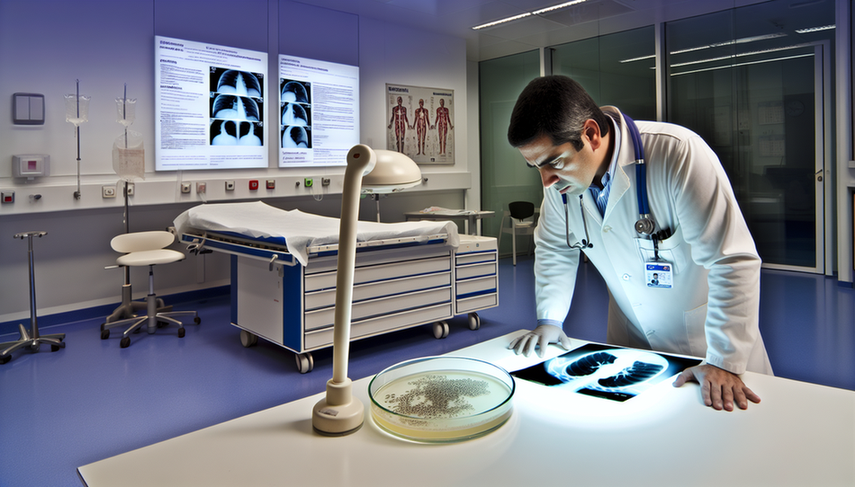Pneumonia Diagnosis: Chest X-Ray, Sputum Culture, and Typical Pathogens

The diagnosis of pneumonia is a clinical challenge that requires a combination of diagnostic tools to accurately identify the underlying cause and guide appropriate treatment. Among the most commonly used tools are the chest X-ray and the sputum culture. These tests are essential for detecting pulmonary consolidation and determining the typical pathogens responsible for the infection.
Diving Deeper into Diagnosis
The chest X-ray is a fundamental tool in the initial evaluation of patients suspected of having pneumonia. It allows visualization of pulmonary infiltrates, which may indicate the presence of pulmonary consolidation. However, it is important to note that radiological findings do not always directly correlate with the etiology of pneumonia. For example, a recent study found that chest X-ray findings did not correlate with the etiology of pneumonia in patients with HIV, although pulmonary ultrasound showed correlation with Pneumocystis jirovecii as the etiology.
The sputum culture is another crucial tool in the diagnosis of pneumonia, as it allows for the identification of the typical pathogens responsible for the infection. In patients with HIV, for instance, it has been observed that Mycobacterium tuberculosis and Pneumocystis jirovecii are common causes of pneumonia. Accurate identification of the pathogen is essential for guiding appropriate antibiotic treatment and improving clinical outcomes.
Conclusions
The combined use of chest X-ray and sputum culture is essential for the diagnosis of pneumonia. While the chest X-ray is a valuable tool for detecting pulmonary consolidation, it is important to complement it with laboratory tests such as sputum culture to identify the typical pathogens. This multidimensional approach is crucial for providing effective treatment and improving outcomes in patients with pneumonia.
Referencias
Created 6/1/2025
